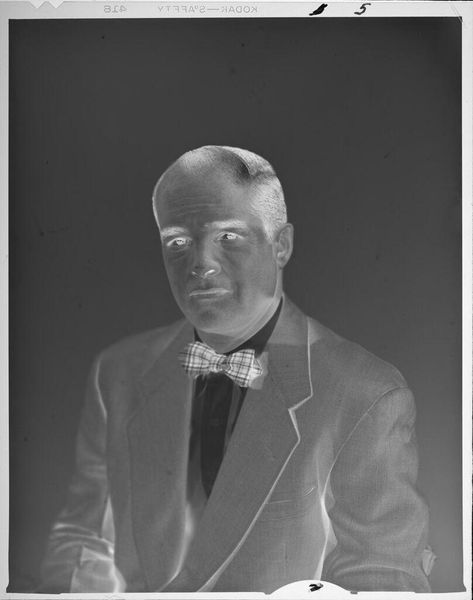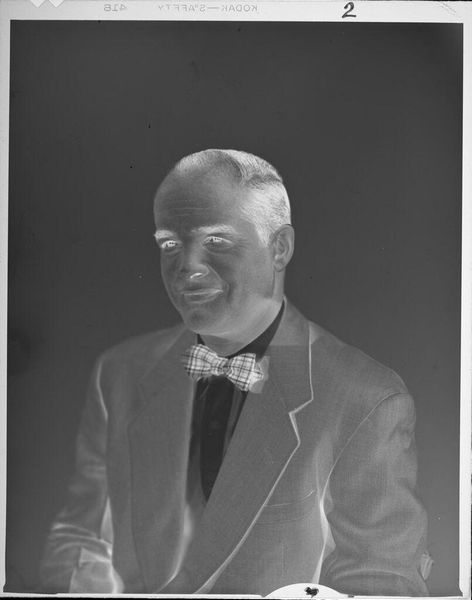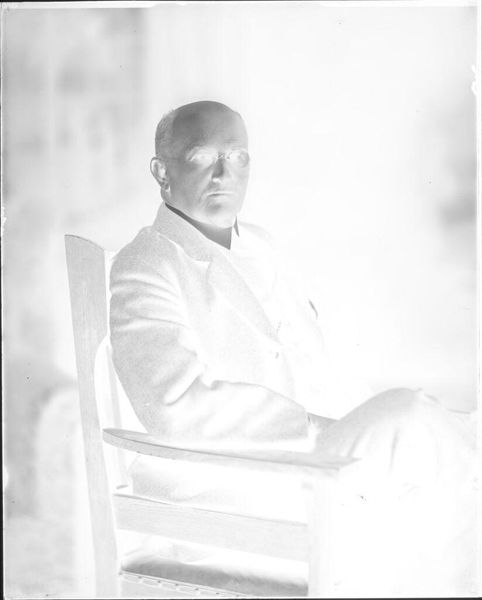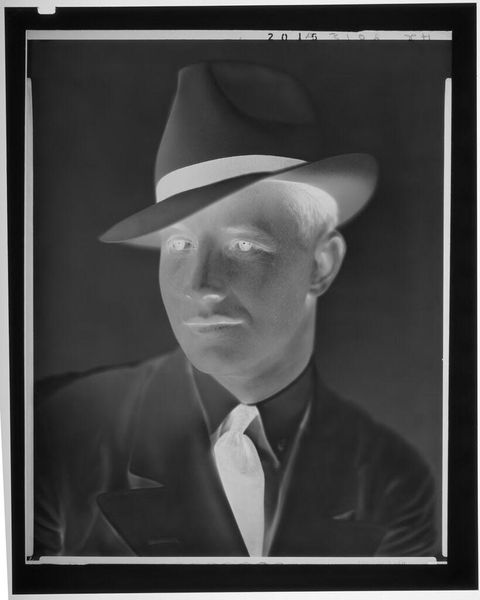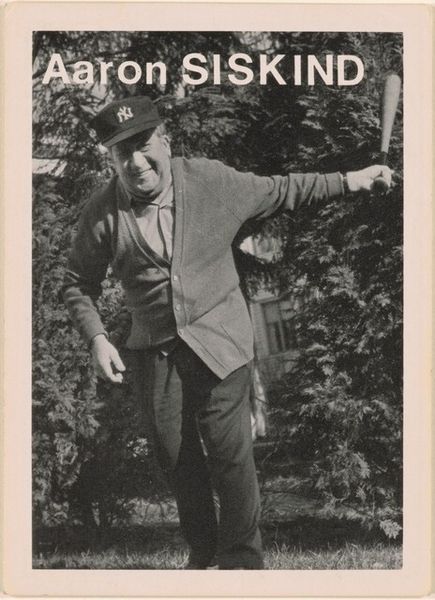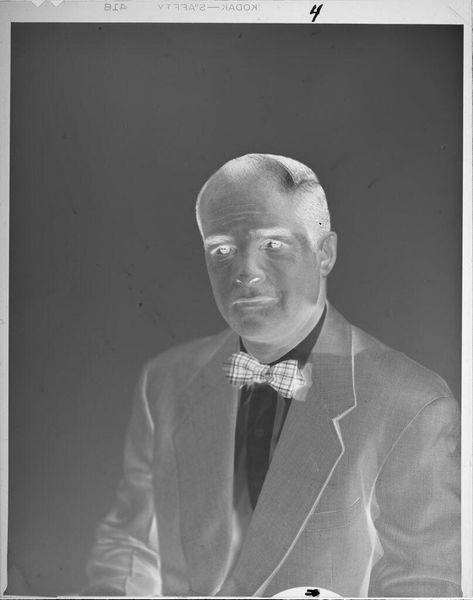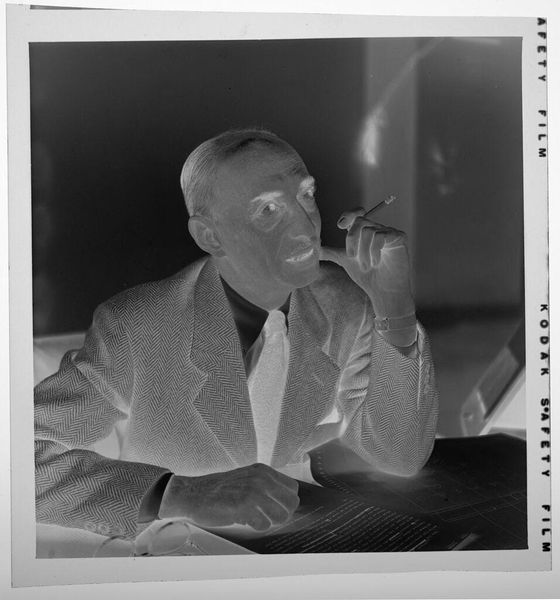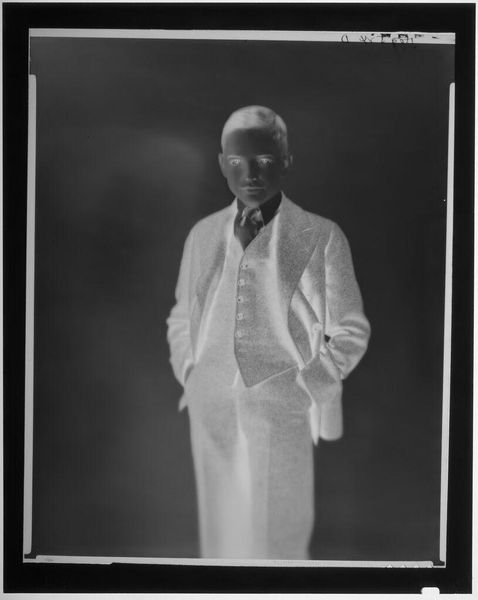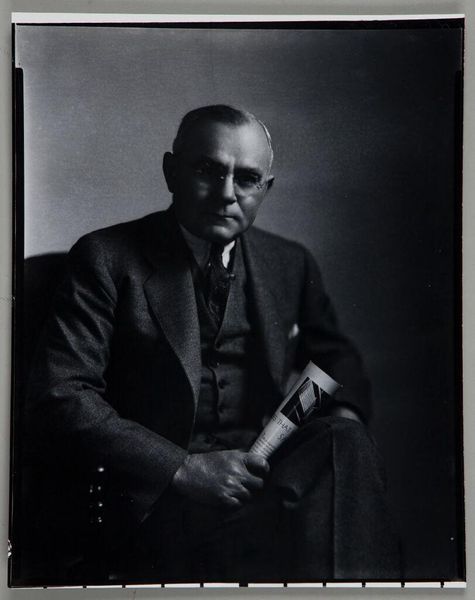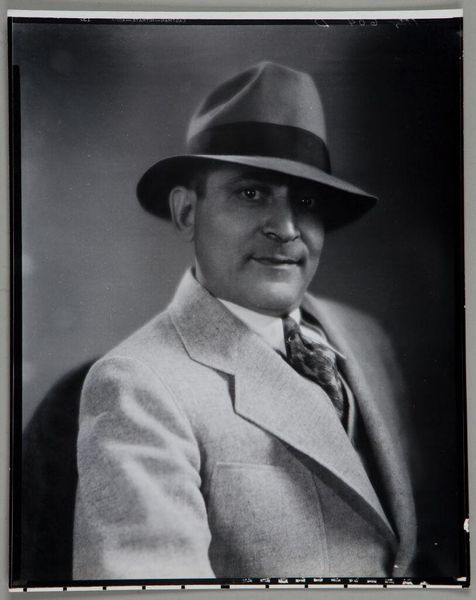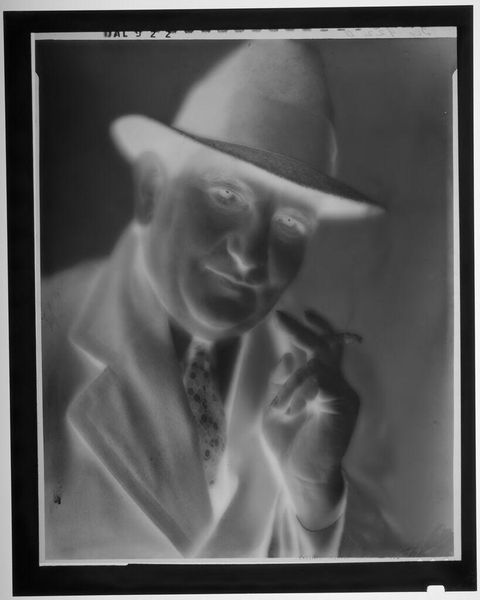
photography
#
portrait
#
self-portrait
#
black and white photography
#
pictorialism
#
photography
#
black and white
#
monochrome photography
#
ashcan-school
#
monochrome
Copyright: Public domain
Curator: Welcome. Today, we’re looking at Gertrude Kasebier's “Portrait of George Luks,” a photograph from 1910. Kasebier, of course, was a prominent figure in the Pictorialist movement, known for her soft-focus and painterly approach to photography. Editor: The first thing that strikes me is the palpable air of defiance radiating from the portrait. Luks is staring intensely, almost challenging the viewer, isn't he? There is something powerful and also subtly unnerving in that gaze. Curator: Absolutely. It’s key to remember Luks was a leading figure of the Ashcan School, a movement that intentionally depicted everyday life, particularly of the urban working class, in a realistic, even gritty, manner. This portrait captures some of that rebellious spirit. Kasebier, known for her society portraits, made a significant departure here. It demonstrates photography's capability of showing masculine confidence at that time. Editor: Considering Kasebier’s own battles against societal expectations as a female photographer, I wonder if she saw a kindred spirit in Luks. His rejection of academic artistic standards aligns with feminist efforts against patriarchy in broader cultural production. Also, think about what a painting would represent vs what photography represented at that time. Curator: That's insightful. Pictorialism itself can be seen as a response to the institutional art world. Photography fought for acceptance as an art form in its own right. Figures such as Alfred Stieglitz championed pictorialists as fine artists whose vision extended beyond simple documentation. Editor: And this portrait sits intriguingly at that intersection, doesn't it? Kasebier's soft focus lends it an artistic, almost romantic, aura, yet Luks's pose and gaze hold a steadfast refusal to be aesthetically pleasing. The soft edges of Pictorialism meet the hard edges of urban realism. Curator: Indeed. One can read into it that struggle between capturing Luks as an individual and as a representative of the changing art world. It portrays an artist, pushing boundaries. It makes a powerful statement about art’s capacity to represent broader societal shifts. Editor: And from a contemporary lens, looking at the historical context, the black and white medium only adds to the sense of the past speaking to us now. It raises complex questions about the nature of artistic representation and the individual versus collective identity. Curator: Precisely. The portrait operates as both a document of a specific time and a timeless commentary on the artist's role in shaping cultural discourse. Editor: I'll walk away considering the enduring power of photography as a medium for expressing resistance and revealing intersectional layers of history. Curator: As I leave, I ponder what it meant for photography to begin representing a working artist like Luks in 1910.
Comments
No comments
Be the first to comment and join the conversation on the ultimate creative platform.

